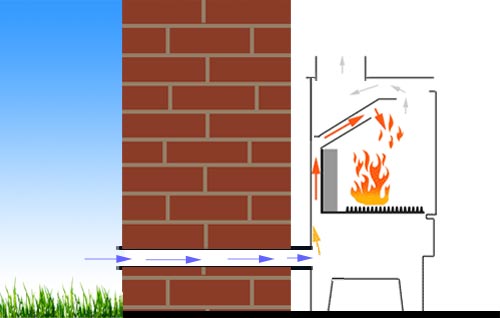You have no items in your shopping cart.
DUBLIN - LAOIS - LIMERICK - PH : 0578682390
Room sealed stoves with external air supply

Fuel needs a supply of air to burn and so normally a stove will take a certain amount of air from the room in which it is installed. This air has to come from somewhere and therefore the same amount of air is drawn into the house through vents or openings. This can create cool draughts. Luckily the air which a stove needs to run is nowhere near as extreme as the amount of air drawn up through an open fire. Just compare the opening sizes: with a stove you may have an air inlet opening about the size of a 2p coin, with an open fire the chimney is left open and can typically be a 200mm or bigger hole. So you are streets ahead of an open fire with a stove anyway, but the stricter requirements of modern building techniques mean that increasingly we need to connect the stove directly to the air supply to avoid leaks into the building itself.
A stove with a direct air supply will have a spigot which allows you to connect it to an air duct which leads outside. The direct air spigot is usually at the back of the stove near the base, or sometimes it is underneath the stove so that the connection to the duct can be kept discrete. The installation instructions for the stove will normally detail how the direct air is connected, ask us if in doubt. The direct air connection will supply some of the air needed, in which case we call it Partial, or all of the air needed, in which case we call it Total. As well as this some stoves may be additionally sealed to vastly reduce leakage essential for air pressure tests for modern, airtight houses, for example PassivHaus buildings. This we term as a Leak Sealed.
Where the supply is partial it is not uncommon for the direct air duct to supply the primary air, whilst the secondary air is drawn from the room.







